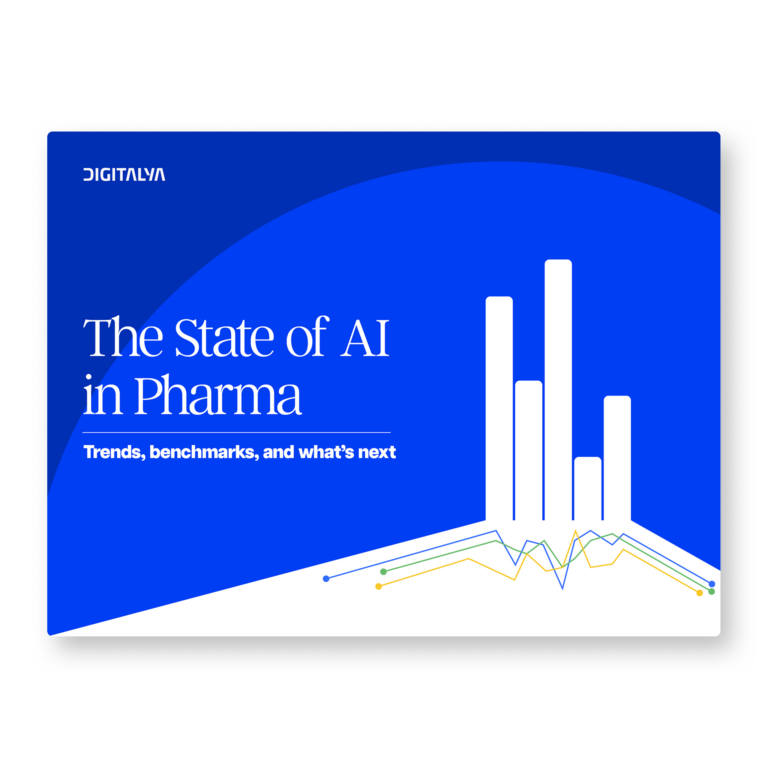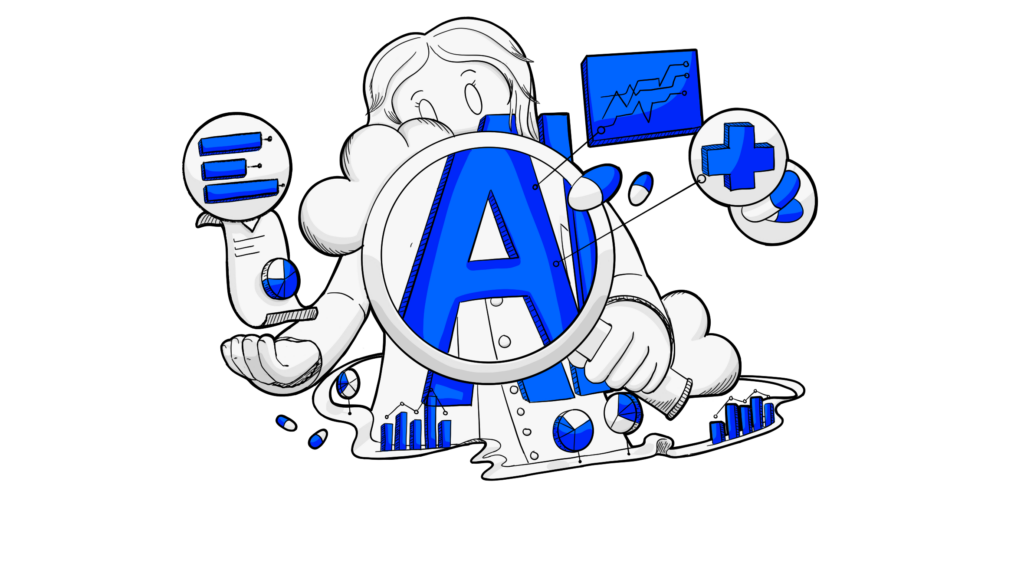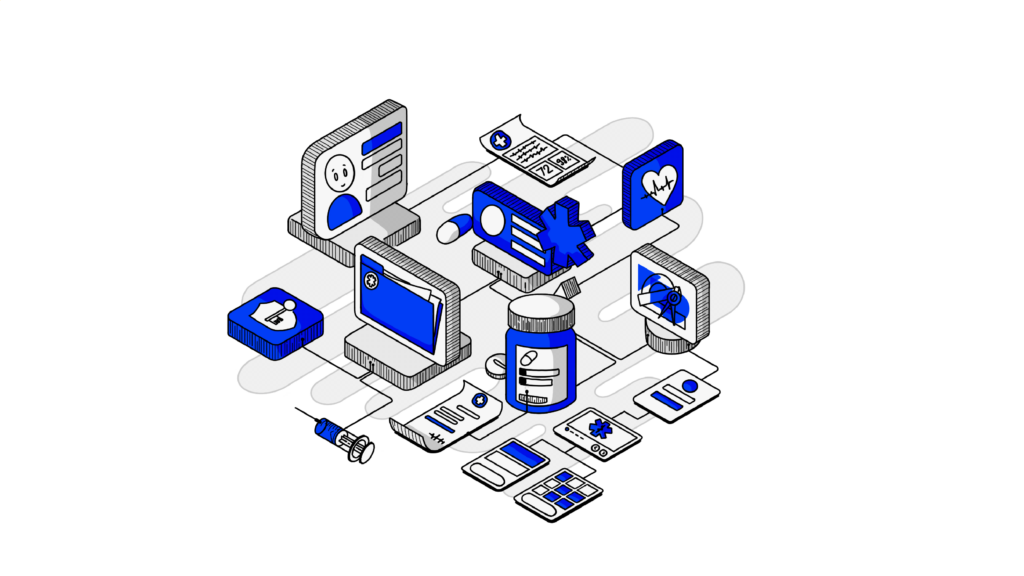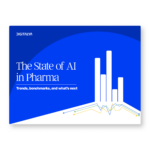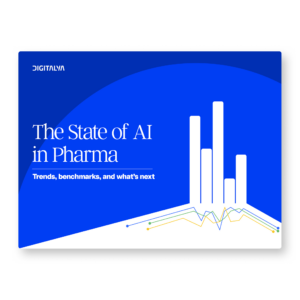1. The current landscape of patient portals
A worldwide study on the global pharma industry corporate reputation, as reviewed by patient groups, showed that, in 2022, 60% of the patients considered the reputation ”good” or ”excellent.” However, when asked about their access to medicines, 52% of the patient groups considered the reputation as ”fair” or ”poor.”
Patient portals are probably the most popular pharma digital companions. While the common electronic patient portals offer functionalities like appointment scheduling, prescription refills, patient messages, messaging for EHR communication between patients and providers, and access to basic medical records, they often fall short of fostering deeper patient satisfaction and engagement.
Let’s delve into the benefits and limitations of patient portals, focusing on how they support communication between patients, clinicians, and other health care providers.
1.1 Benefits and challenges
Patient portals generally offer a secure online tool for patients to manage their health information, helping them with the basics: learning more about their disease, getting helpful tools to manage their disease, tracking their progress, ensuring medication adherence, and, in some cases, adding and checking their medical records, scheduling appointments, and refilling prescriptions.
However, many portals fall short of their full potential. Static content delivery, limited interactivity, and lack of behavioral insights lead to a generic user experience that fails to cater to individual needs.
This one-size-fits-all approach to patient engagement tools can increase patient frustration and, ultimately, decrease engagement with the portal.
To unlock the true power of patient portals, the industry must embrace the transformative potential of Artificial Intelligence (AI) and Machine Learning (ML).
Despite these limitations, patient portals offer significant benefits for both patients and pharma companies:
Benefits for Patients:
- Improved convenience and accessibility — patients can have online access to their electronic health records and interact with a healthcare professionals through patient portal messages from anywhere with an internet connection. In many cases, there is even no need for a visit to the medical center or doctor’s office, saving important time and money.
- Enhanced communication — this is no news, but it’s worth emphasizing: portals facilitate communication between patients and pharma companies or healthcare providers. Good communication can improve patient outcomes, which leads to stronger patient engagement and a better reputation for the organization.
- Empowerment and self-management — portals can bring medical education in a patient-friendly form and provide “digestible” medical information that can help people become more aware of their health and treatment journey or visualize test results. In consequence, patients foster a sense of ownership and control over their health.
Benefits for Pharma Companies:
- Increased patient engagement — personalized portals can improve patients’ adherence to medication regimens and participation in clinical trials.
- Targeted outreach and marketing — insights from patient data can be used not only to develop better treatments but also to create targeted communication and marketing campaigns that speak to the audience about their specific needs and behaviors.
- Improved data collection and analytics — patient-reported personal health data captured through the portal, can be invaluable for research and development efforts.
However, challenges still exist:
- Low patient adoption rates — many patients are unaware of patient portals, lack the technical skills to use them effectively, or simply don’t trust that their sensitive information is kept private.
- Data security and privacy concerns — any information technology should be securely dealt with, especially when it operates with electronic health records, people’s most private data, thus patient safety. While AI and Machine Learning bring a tremendous amount of efficiency, they should also be implemented with the greatest caution regarding security and privacy.
- Limited functionality — many portals available at the present moment offer basic functionalities and lack the personalization features that could enable patients to engage more.
1.2 Existing technologies and limitations
Let’s further explore the limitations that the existing technologies have.
Basic functionalities:
- Static content delivery: Information is presented in a one-size-fits-all manner, failing to adapt to individual needs. Collaborative care is an important part of patient engagement, which needs further development.
- Limited interactivity: Interactions are primarily transactional, hindering two-way communication (e.g., thourgh patient portal messages) and personalized support. They don’t enable patients to offer feedback.
- Lack of actionable insights: Data isn’t leveraged to provide patients with tailored guidance or nudges for improved health management.
Although a breakthrough in health information technology, AI in pharma can come with biases. It is well known that artificial intelligence bears social biases, a normal result of being trained by people and human-generated inputs.
These limitations can lead to patient frustration and ultimately, decreased engagement with the such a tool. Technologies like AI in pharma marketing are the way to personalize the user experience and unlock the full potential of portals.
1.3 The potential of artificial intelligence in patient portals
As already said, AI and machine learning can revolutionize patient portals by personalizing the user experience and creating a more dynamic and interactive platform. Generative AI and large language models should be integrated into patient portals to automate and enhance patient-provider communication.
In 2024, the global market size for AI in healthcare was valued at US$20.9 billion. By 2029 it is expected to grow to US$148.4 billion, with a 48.1% CAGR. The abundance of health data available encourages the rise of a multitude of AI-driven technologies and AI tools, that streamline operations and bring more efficacy, health equity, accuracy, patient engagement, and patient outcomes.
Machine learning technologies, such as the use of a large language model for generating patient communication, can help both patients and healthcare professionals make better decisions by giving a better view of diagnostic accuracy, predicted clinical outcomes (considering social biases are properly addressed), or the efficiency of treatment.
This AI system also helps address workload burden and reduce cognitive workload on clinicians by automating routine tasks.
Among the well-known AI tools and machine learning algorithms used for health information technology are decision trees (DTs), random forests (RFs), neural networks, support vector machines (SVMs), and linear or logistic regression (LR).
2. Enhancing patient experiences with personalization
Static content delivery and limited interactivity are hallmarks of many current portals. This one-size-fits-all approach fails to cater to individual needs and preferences, ultimately leading to decreased patient engagement.
We’ve already seen that artificial intelligence and machine learning can revolutionize portals and online health services.
There are several ways in which these technologies can deliver a more personalized experience for patients and healthcare professionals alike.
2.1 Tailored health information and education
Imagine an artificial intelligence powered portal that delivers on-demand, interactive, personalized health information tailored to a patient’s specific condition, literacy level, and language preference.
A patient education platform, if you want.
It enhances patient access to a better understanding of his condition and line of treatment.
Conversational AI chatbots or interactive frequently asked questions sections can be integrated to answer patient questions in real-time and provide tailored medical educational content.
These chatbots can also assist in drafting responses and create AI-generated message drafts to efficiently address more complex patient questions, allowing clinicians to review and edit replies before sending, which helps maintain accuracy and reduces workload.
AI-generated responses to patient messages can improve engagement by providing timely, relevant, and personalized communication, helping patients feel more connected to their care teams.
2.2 Proactive recommendations and support
AI tools in the form of ML algorithms can analyze patient data (prescription refills, medical records, self-reported symptoms) to predict potential issues with medication adherence.
The portal can then trigger targeted interventions, such as personalized medication reminders or educational content specifically addressing the patient’s risk factors for non-adherence.
Some concrete examples of tools to integrate into a portal can be:
- AI-powered chatbots — patients can securely message conversational AI chatbots about personalized medical information and medication education tailored to their specific condition, literacy level, and language. For more complex queries or direct health issues, AI generated drafts of responses can be reviewed by clinicians before being sent to patients, ensuring accuracy and a human tone. Responses drafted by AI can be especially helpful for patients with chronic conditions who require ongoing support and monitoring. Reviewing and editing these AI drafts is just one of the many other tasks clinicians manage within the portal workflow, alongside managing inbox messages and ensuring patient safety.
- Predictive analytics for adherence — ML algorithms can analyze patient data (prescription refills, medical records, self-reported symptoms) to predict potential adherence issues. The portal can then trigger targeted interventions, such as medication reminders or educational content tailored to the patient’s specific risk factors for non-adherence.
2.3 Improved communication and self-management tools
AI can analyze patient communication within the portal to detect negative emotions or concerns.
Sentiment analysis allows for early intervention and proactive support from healthcare professionals. Primary care clinicians and primary care physicians are key users of these tools, as they manage a significant portion of patient communication and clinical decision-making in medicine.
Additionally, AI can personalize gamification elements within the portal, encouraging patients to complete medication schedules, track health data, and participate in educational modules, ultimately improving self-management and health outcomes. These tools can contribute to improved patient health by supporting medicine adherence and enabling early detection of health issues.
Through machine learning-driven segmentation, ML can analyze data to segment populations into distinct groups based on demographics, disease state, medication usage, and other relevant factors, so that the communication with these audiences has a more personal touch, addressing their specific concerns.
These are just a few ways AI generated insights can personalize the patient experience within portals, fostering deeper engagement and empowering patients to actively manage their health.
3. Benefits for the pharma industry
AI-driven patient portals are often met with positive perceptions from both patients and healthcare providers, as they offer convenience, tailored information, and improved communication. There is a growing appetite among healthcare providers and pharma companies for AI-driven solutions to address workload challenges and improve patient engagement.
By creating a personalized and engaging patient portal experience, pharma companies can achieve several key benefits:
3.1 Increased medication adherence and outcomes
Personalized education, proactive support, and gamification elements can all lead to improved medication adherence and ultimately, better health outcomes for patients. This translates to a healthier patient population and potentially lower healthcare costs for payers.
AI tools can further help patients better understand their treatment plans, contributing to higher adherence rates and better health outcomes. Additionally, by streamlining communication and reducing administrative tasks, these tools can help decrease physician burnout associated with EHR workload.
A review on how patient engagement impacts healthcare quality showed that, according to health records in the US, there are higher chances for highly engaged patients to adopt health-improving behaviors which, in turn, lead to better health outcomes, lowering costs in the long-term.
While these benefits are significant, it is crucial to balance them with patient safety risk, such as the potential for errors or outdated information in AI-generated responses.
3.2 Targeted outreach and patient recruitment
Streamlined patient recruitment: By analyzing patient data, artificial intelligence can identify suitable candidates for clinical trials, accelerating recruitment and improving study efficiency.
Patients receive disease-specific information and support groups directly relevant to their needs, leading to more effective recruitment for clinical trials and product launches.
3.3 Improved data collection and insights
Patient portals can collect real-world data on medication use, side effects, and patient-reported outcomes, providing valuable insights for research and development. A research team can analyze this data to ensure accuracy and derive actionable insights.
Patient-reported data captured through the portal, such as medication adherence rates and symptom tracking, can be invaluable for research and development efforts. These insights can guide the creation of more effective medications and inform future marketing campaigns.
4. Real-world examples of engaging patient portals
In England, there is the NHS app, which has been recently integrated with a patient portal called Patients Know Best (PKB).
The portal makes available personalized health information that is generated from GPs, hospitals, mental health services, and the community.
The patients also contribute with data such as their own health information from monitoring devices and questionnaires.
Amgen, a leading worldwide biotechnology company, has developed a personalized patient support platform, Amgen Support+, that provides online access to patient benefits verifications, as well as support and helpful resources for care teams.
Sanofi developed a program and a portal, theSanofi Patient Connection, that helps US patients access medication at no cost if they are eligible, understand what their insurance covers, and identify additional helpful resources.
Pfizer has developed the Pfizer Clinical Trial Alumni Portal, which supports clinical trial subjects to access, download, and share (with medical professionals) their data reports. The information is presented in an easy-to-understand manner, covering the medical history, lab results, vital sign measurements (such as blood pressure), side effects, or adverse events.
5. Challenges and considerations
Despite the potential benefits, AI-driven patient portals also pose challenges. Data security and privacy concerns, transparency, and user trust are critical considerations in the implementation of large language models and machine learning technologies. Additionally, there are risks associated with automation bias, automation complacency, and confirmation bias, as clinicians may over-trust AI-generated responses that align with their expectations, potentially compromising patient safety.
In the context of user trust and transparency, vigilance decrement and automation complacency increases can result in overlooked errors, as providers may pay less attention to AI generated drafts over time due to increased trust in the system.
It’s essential to address these challenges responsibly to ensure the ethical and effective use of AI. Managing cognitive workload is also crucial, as overextended clinicians may be more likely to rely on AI without sufficient oversight, increasing patient safety risks.
5.1 Data security and privacy concerns
It cannot be emphasized enough how sensitive patient health information is. Safety and quality are paramount. Robust data security measures are essential to ensure patient trust and compliance with regulations like HIPAA. Here’s how pharma companies can address this challenge:
- Implement best practices for data encryption and anonymization.
- Obtain explicit user consent for data collection and usage.
- Conduct regular security audits and penetration testing.
- Clearly communicate data security policies to patients.
5.2 Ensuring transparency and user trust
Transparency is crucial when it comes to AI decision-making within the portal. Other stakeholders, such as organizational leaders and technology developers, also play a key role in ensuring transparency and safety throughout the implementation process.
As much as the technology eases access to health services, patients still need to understand how AI is used, have control over the access to their personal health record, and know if they are seeing generative AI content or interacting with an AI-powered chatbot.
Here’s how to build trust:
- Be clear about the role of AI in the portal and how it personalizes the experience.
- Allow patients to opt out of AI features or adjust their data-sharing preferences.
- Develop a clear and accessible explanation of how AI decisions are made.
5.3 Implementing AI and Machine Learning responsibly
Responsible implementation of AI and ML is key. Pharma companies should prioritize fairness, health equity, explainability, and user control when deploying these technologies in their patient portals. Here are some key considerations:
- Avoid algorithms that perpetuate bias based on demographics or health conditions.
- Ensure AI models are trained on high-quality, diverse datasets.
- Develop mechanisms for patients to challenge or appeal AI-driven recommendations.
Future work should focus on improving AI safety, error detection, and human-AI collaboration in patient portals.
6. Building a patient-centric future with AI
By embracing AI and ML, patient portals can become powerful tools for patient engagement and empower patients to take an active role in managing their health.
A BCG analysis of patients and healthcare industry stakeholders from the US, UK, Germany, China, and Japan markets revealed that, in regard to the patients’ expectations from pharma companies, there are three major attributes: “Commits to affordable access,” “Trials reflect real world and outcomes that matter to patients,” and “Provides transparent information.”
These attributes can be achieved by harnessing the power of AI.
Thus, these portals can become more than just digital tools—they can become personalized partners in patient care, empowering patients, and transforming healthcare outcomes for the better.

